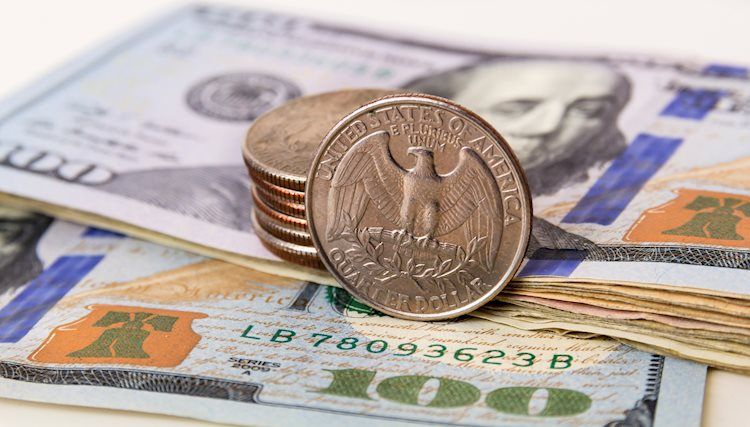- The DXY index declined to 104.05, its lowest level since early September and below the 100-day SMA.
- The headline and core CPI from October came in lower than expected.
- Investors are expecting rate cuts sooner, betting on no more hikes by the Fed in 2023.
The US Dollar (USD) experienced a substantial downward movement in Tuesday’s session, and the DXY index, which measures the value of the US Dollar versus a basket of global currencies, tanked to 104.05 driven by a lower-than-expected CPI and dovish bets on the Fed. Focus now shifts to the Producer Price Index (PPI) and Retail Sales figures from October on Wednesday.
As the United States economy recently printed lower than expected job creation and inflation figures, markets are taking off the table a rate hike at the next Federal Reserve (Fed) meeting in December. In addition, investors are seeing rate cuts sooner, in May 2024. This has made US Treasury yields decline, thus giving the market a reason to lose interest in the US Dollar.
Daily Digest Market Movers: US Dollar weakens as soft CPI fuels dovish bets on the Fed
- The US Dollar Index dived to 104.05, down more than 1% and standing near lows not seen since September, after the report of lower inflation figures.
- The US Bureau of Labor Statistics reported that the Core Consumer Price Index (CPI) from October missed the consensus. It came in at 4% YoY vs the expected 4.1% and decelerated from its previous figure of 4.1%.
- The headline figure came in at 3.2%YoY, below the consensus of 3.3% and in relation to its last reading of 3.7%.
- US Treasury yields fell vertically with the 2-year rate declining to 4.86%, while the 5 and 10-year rates declined to 4.45% and 4.46%, respectively..
- According to the CME FedWatch Tool, the odds of a 25-basis-point hike in December are extremely low, below 10%. In addition, markets are now pricing in rate cuts in May 2024.
- On Wednesday, the US will report Retail Sales from October, which are expected to have contracted by 0.3%, while the Producer Price Index (PPI) from the same month is expected to decelerate to 1.9% YoY.
Technical Analysis: US Dollar bears gain ground and challenges the 100-day SMA
Based on the daily chart, the DXY Index has a bearish bias as indicators are flashing signs of bears seizing control. The Relative Strength Index (RSI) is trending below its midline, while the Moving Average Convergence Divergence (MACD) histogram displays rising red bars.
Despite bears gaining ground and pushing the pair below the 20 and 100-day Simple Moving Average (SMA) in the short term, the DXY is still above the 200-day SMA. This suggests that bulls are in control in the broader context.
Support levels: 104.10, 103.60 (200-day SMA), 103.30.
Resistance levels: 104.15 (100-day SMA), 104.50, 105.00.
Interest rates FAQs
Interest rates are charged by financial institutions on loans to borrowers and are paid as interest to savers and depositors. They are influenced by base lending rates, which are set by central banks in response to changes in the economy. Central banks normally have a mandate to ensure price stability, which in most cases means targeting a core inflation rate of around 2%.
If inflation falls below target the central bank may cut base lending rates, with a view to stimulating lending and boosting the economy. If inflation rises substantially above 2% it normally results in the central bank raising base lending rates in an attempt to lower inflation.
Higher interest rates generally help strengthen a country’s currency as they make it a more attractive place for global investors to park their money.
Higher interest rates overall weigh on the price of Gold because they increase the opportunity cost of holding Gold instead of investing in an interest-bearing asset or placing cash in the bank.
If interest rates are high that usually pushes up the price of the US Dollar (USD), and since Gold is priced in Dollars, this has the effect of lowering the price of Gold.
The Fed funds rate is the overnight rate at which US banks lend to each other. It is the oft-quoted headline rate set by the Federal Reserve at its FOMC meetings. It is set as a range, for example 4.75%-5.00%, though the upper limit (in that case 5.00%) is the quoted figure.
Market expectations for future Fed funds rate are tracked by the CME FedWatch tool, which shapes how many financial markets behave in anticipation of future Federal Reserve monetary policy decisions.
